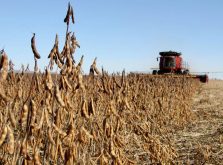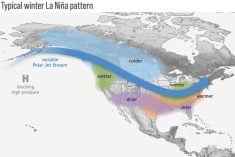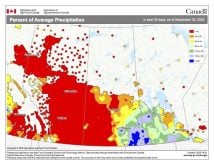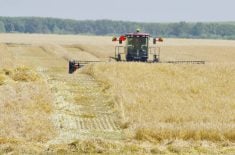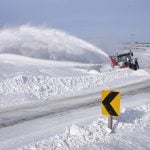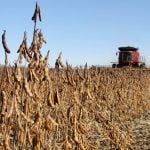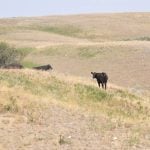For most people, the word tornado brings feelings of awe and even a little fear. Unless you have already witnessed a tornado first-hand, many who are interested in weather secretly wish they could safely experience its awesome beauty and power.
Worldwide, Canada is second only to the United States in the number of tornadoes occurring each year, with an average of about 70 reported. Southern Ontario experiences the highest number, followed by southern Manitoba, Saskatchewan and central Alberta. While these areas report most of Canada’s tornadoes, they have occurred in nearly all regions of Canada.
Read Also

October rain recharges Manitoba soils
Daniel Bezte looks back on October weather on the Prairies and looks ahead to see whether there’s any consensus for this winter’s weather.
Tornadoes can strike at any time of year, but in Canada tornado season runs from April to October, with June, July and August as peak months. This differs from the U.S., where tornadoes peak in April and May.
The difference in timing is due to the amount of cold air available for severe storm development. In spring, the southern and central U.S. has become hot, but cold air is still available to help develop thunderstorms. By mid-summer, most of the cold air has retreated into Canada. This puts our region into warm conditions, but with cold air close to our north.
What are tornadoes and how do they form? A classic definition is a violently rotating column of air that extends from a thunderstorm to the ground, which may or may not be visible as a funnel cloud. For this rotating column of air to be classified as a tornado, it must touch the ground.
Small-scale weather
We don’t really know how tornadoes form. They usually develop from supercell thunderstorms, which are difficult to predict. Even if we were able to accurately predict where and when these thunderstorms would develop, the intense part of the thunderstorm usually only covers an area of a few hundred square kilometres. Within this area, the severe weather may only occur in a small area.
If we look at the size of a tornado, we will find they range from as small as about 40 metres to as large as two km across, with the average width around 100-200 metres. This means that, as far as weather phenomena are concerned, tornadoes are very small, which makes them hard to study first-hand.
Manitoba sees about 15 tornadoes on average each year, making them fairly rare. What we do see a little more frequently are the weakest members of the tornado family – the cold air funnel — so we’ll begin our discussion of tornadoes there. Personally, I have never seen a tornado, though I have seen a cold air funnel.
All tornadoes develop from what we refer to as a funnel cloud. In strong thunderstorms, these funnels elongate and may eventually touch the ground to become a tornado, but a funnel cloud all by itself is not considered a tornado.
While a fair bit of research has been done on tornadoes and the storms that produce them, little research has been done on cold air funnels so we know very little about them. In general, cold air funnels form in environments where we would not typically expect severe weather to develop — that is, in hot, muggy, unstable air.
Usually, cold air funnels form when there is a large pool of cold air aloft that is most often associated with an upper-level low. These conditions provide two critical ingredients that are believed necessary for the development of cold air funnels: instability and vorticity.
You’ll remember that warm air will rise and cold air will sink. If the atmosphere is unstable, you need either really warm air at the surface or very cold air in the upper atmosphere. This is why there must be a pool of cold air aloft for cold air funnels to form, because this provides the first ingredient: instability, or rising air.
The second ingredient is vorticity, or spinning air. Areas of low pressure are large areas of spinning air — too large to form into a funnel cloud or tornado. But within this large area of spinning air, smaller regions get “spun up,” creating what meteorologists call a vorticity-rich environment that contains a lot of little eddies of spinning air.
What scientists believe happens is that one of these small eddies of spinning air gets caught in an updraft. This updraft then elongates the eddy, causing it to contract in width and, just like a figure skater pulling his or her arms in during a spin, this causes the rotation to speed up, creating a funnel cloud.
These funnel clouds are generally weak and short-lived and will rarely become strong enough, or last long enough, to touch down. If they do touch down, they rarely cause much damage, often comparable to that of a strong dust devil. In fact, when these cold air funnels do touch down, they are sometimes referred to as land spouts.
Since the potential exists for cold air funnels to touch down as tornadoes, Environment Canada must issue special weather statements to warn the public. Since they rarely touch down, and when they do, they rarely cause damage, such statements will usually urge the public to be watchful and take precautions if necessary.
In the next issue we will take a break from our look at tornadoes to re-examine the hows and whys of lightning.




